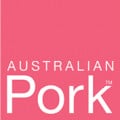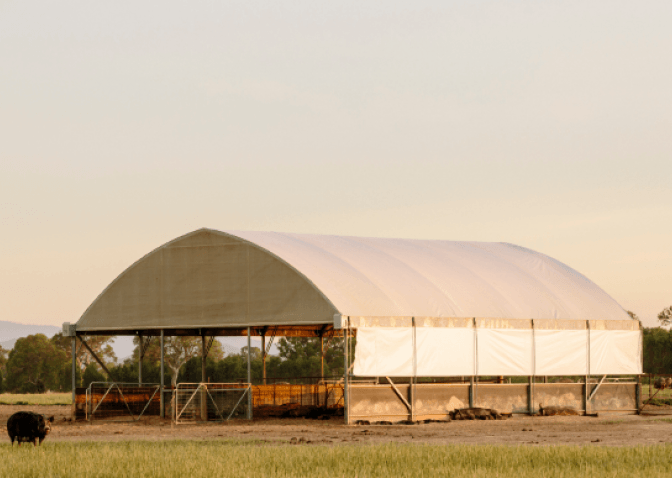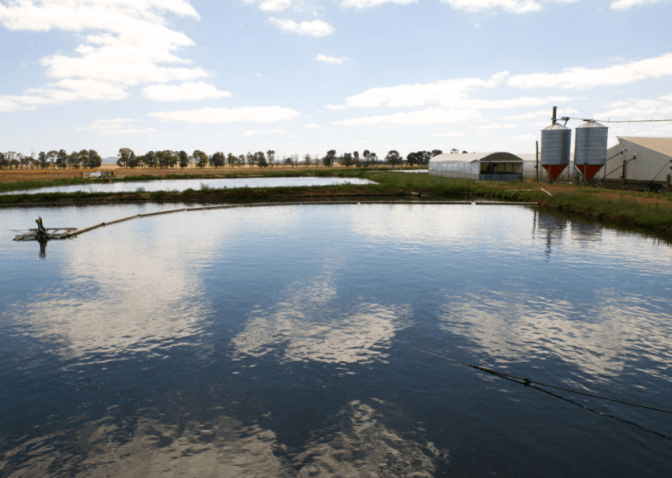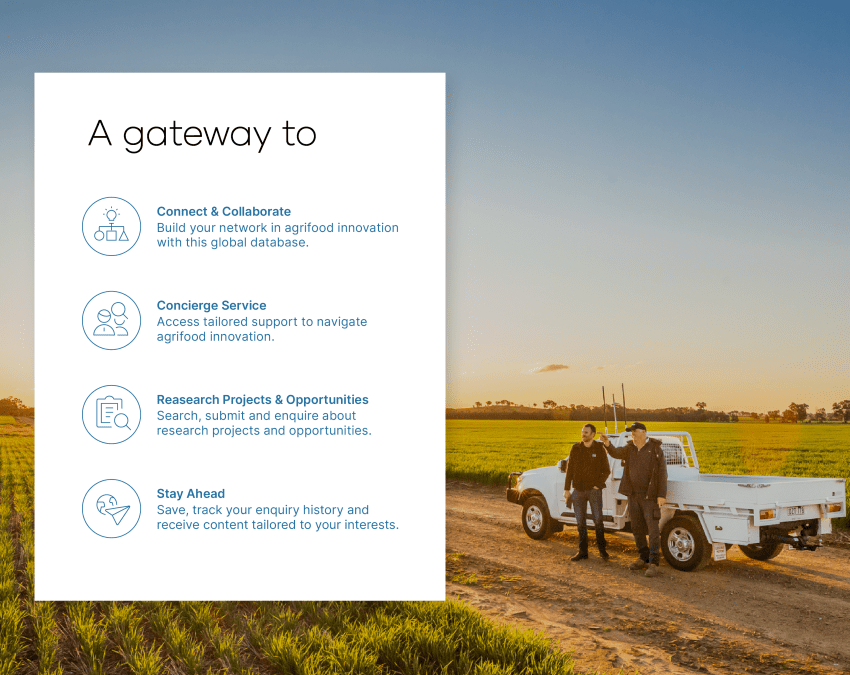
Turning waste into water: The pork industry's transformative tech ready for investors
The Australian pork industry and researchers from UNSW Canberra have developed a sustainable, cost-neutral device to safely recycle on-farm effluent and potentially generate a source of pure drinking water. Now, the duo are looking for private sector investment to scale the technology
_Smaller-crop-1185x680.png)
As the world’s most consumed meat – and the second most popular protein in Australia – the pork industry is big business.
More than 400,000 metric tonnes of pork are produced across 2,700 sites in Australia each year, contributing over $5.2 billion to the economy.
But as with any intensive agriculture, pork production doesn’t come without its by-products, and the biggest in this industry is effluent.
Research and development corporation Australian Pork Limited (APL) has invested significantly into a range of projects that investigate the effective management and reuse of manure and effluent.
This is a key aspect of meeting the industry’s commitment to producing environmentally sustainable pork.
“The pork industry is very progressive and innovative in the environmental and sustainability space,” explained APL Climate Friendly Farming Program Leader, Gemma Wyburn.
“We've always been very keen to innovate and try new things, and we've been investing steadily in the environmental space for a long time now.
Related organisations


“Not only do we have environmental pressures, but we've also got social pressures to make changes and improvements. It's no longer acceptable to do the same old thing and get the same old results, we have to innovate and improve, particularly in climate-friendly farming.
“It is an extension of our desire to grow our pigs in the best way we can and make sure that we are looking after the environment and people while we’re doing it.”
RELATED: Australian Pork - Wastewater and effluent sterilisation technology commercial opportunity

Turning waste into water
“APL has a bold ambition to be a leader in the circular space and to have zero waste on farm,” said Gemma.
This includes looking at more innovative ways of dealing with liquid effluent and manure, which is made up of approximately 90% water. The remaining 10% can contain waste feed, water used for cleaning and cooling, spilt drinking water, detergents and disinfectants, as well as traces of veterinary chemicals.
“APL was interested in looking at all aspects of environmental management, and water recycling came up in terms of exploring an optional better use of water,” said Gemma.
RELATED: Next gen plant protein startup, The Leaf Protein Co. ready to scale pilot production
“We reviewed the technologies that were currently available and none seemed particularly suited to the piggery environment and the particular challenges we had around having dirty water and wanting to reuse that.”
Since identifying that priority, APL has invested significant funding in research being conducted by a team at UNSW Canberra, led by Dr Adrian Garrido Sanchis, a Lecturer with the School of Science.
How bubbles and biogas can inactivate waterborne pathogens
The UNSW researchers developed a device known as a bubble column evaporator (BCE), which was designed to produce sterilised water by destroying the bacteria and viruses in the effluent.
The BCE creates a continuous stream of hot, fine bubbles measuring between 1-3 millimetres in diameter at 150-200 degrees Celsius, which rise up through the solution being treated. The collision of this hot rising bubbles with pathogens such as: viruses, bacteria, protozoa and blue-green algae will inactivate them.
The sterilised water is then safe to be re-used in a variety of situations across the farm, including washing down sheds or watering fields. The device has also proven successful in desalinating water and has the potential to create clean drinking water as a secondary by-product of the treatment process by condensing the supersaturated gases that leave the unit.
“Some of the experiments have shown that you can use it to separate out brackish water [water that is saltier than fresh water] which might provide more options for water sources for producers using bore water, as that can often have too high a mineral content to work well with their equipment, or has a taste that means some animals won't drink it,” said Gemma.
Gemma said while the device is not currently set up to generate large enough quantities of pure water to make it a viable source of drinking water for the pork industry, it has got the potential for someone to develop it further.
RELATED: FarmLab seeking investors for Series A funding round to scale tech globally

Trials put runs on the board for new agritech
Dr Adrian Garrido Sanchis said his team have been working on this device for around six years and have conducted in-lab trials and a small field trial at the UNSW Canberra campus. Plans for a larger scale on-farm trial were quashed as a result of COVID-19, however the work to date has already proven the technology’s effectiveness at this scale.
“We got the opportunity to work with APL in order to move this technology from a lab scale into a prototype, and then into a commercial prototype,” explained Adrian.
“The questions were: 'If this idea works in the lab, will it work in the real-life? And could we escalate this idea or this lab technology into a usable, real technology?’ That was the motivation and the results of the trials demonstrated that it is possible but we still need more investment to fully achieve the final goal that is to commercialise the technology within the sector.”
RELATED: The good oil: Australian innovation delivers game-changing alternatives to petroleum & palm
Additional research tested the use of electrically heated air, solar heated air and combustion gas from gas engines to generate the heat bubbles required by the device.
Adrian said combustion gas provides the most efficient and effective heating method and would allow the device to run with no operational costs once implemented by piggeries with biogas generators, as they can utilise the combustion gas already being produced onsite to deliver a closed-loop solution.
Exploring all avenues for commercial opportunities
UNSW and APL patented the combustion gas technology and are now looking for private sector partners to take the device to the next level with additional research followed by the development and manufacture of a commercial scale unit, ready for sale.
While APL are keen to see the initial focus remain on bringing the device to market for use by the Australian pork industry, both Gemma and Adrian said the potential for this technology has much wider possibilities both in Australia and overseas.
Aside from other intensive agriculture production systems such as dairy and horticulture, the device offers potential value to be adapted to sterilise water in other environments, which produce large amounts of combustion gases, such as landfills, wastewater treatment plants, biogas plants and coal power plants. Upscaling the pure water production capacity in these settings could also help to alleviate water security issues in rural communities.
RELATED: How to make Australian agriculture more sustainable podcast
-crop-672x478.png)
“Our end goal is to get these devices available for our pig producers, and other farmers, at a reasonable cost,” said Gemma.
To ensure momentum of this technology, finding future-minded investors is imperative.
“We're looking for someone who is passionate about the industry and is willing to progress it, noting that there's applications beyond the pork industry and options for it to be developed further for other sectors.
“We are very open to ways to take this forward because we think it is a new technology with high potential. We don't have the resources to push it any further ourselves, so we're keen to work with people who see the potential in it that we do.
“Australian pork producers have always been responsive to technology that reduces waste, and of course their cost of production. We believe there’s a real opportunity for the industry as we move towards a future of zero waste in Australian pig farming.”
Learn more about this investment opportunity here.^
^This investment opportunity is only for professional and sophisticated investors as defined in the Corporations Act 2001 (Cth). The content of this opportunity is intended for use by persons having professional experience in matters relating to investments and must not be acted or relied upon by any other person including, without limitation, retail clients.
-crop-850x675.png)
Looking for engagement?
Showcase your commercialisation opportunity today.
Talk to our team to discuss how growAG. can connect your innovation to industry.
Have questions? Find answers to our most frequently asked questions on research projects, commercial opportunities, organisations and more.
